Olive Eggers are a unique breed of chickens beloved by many hobby farmers and backyard chicken keepers. These birds have a distinct look, lay gorgeous olive-green eggs, and make great additions to any flock.
These birds are not only beautiful green egg layers; they are cold-hardy, provide large eggs at a decent rate and get along with other chicken breeds. Breeders picked their unique parent lines to bring the best qualities to backyard chicken keepers and hobby farmers.
If you’re considering getting some Olive Eggers for your farm or backyard coop, here is an overview of these beautiful birds and some tips for taking care of them.
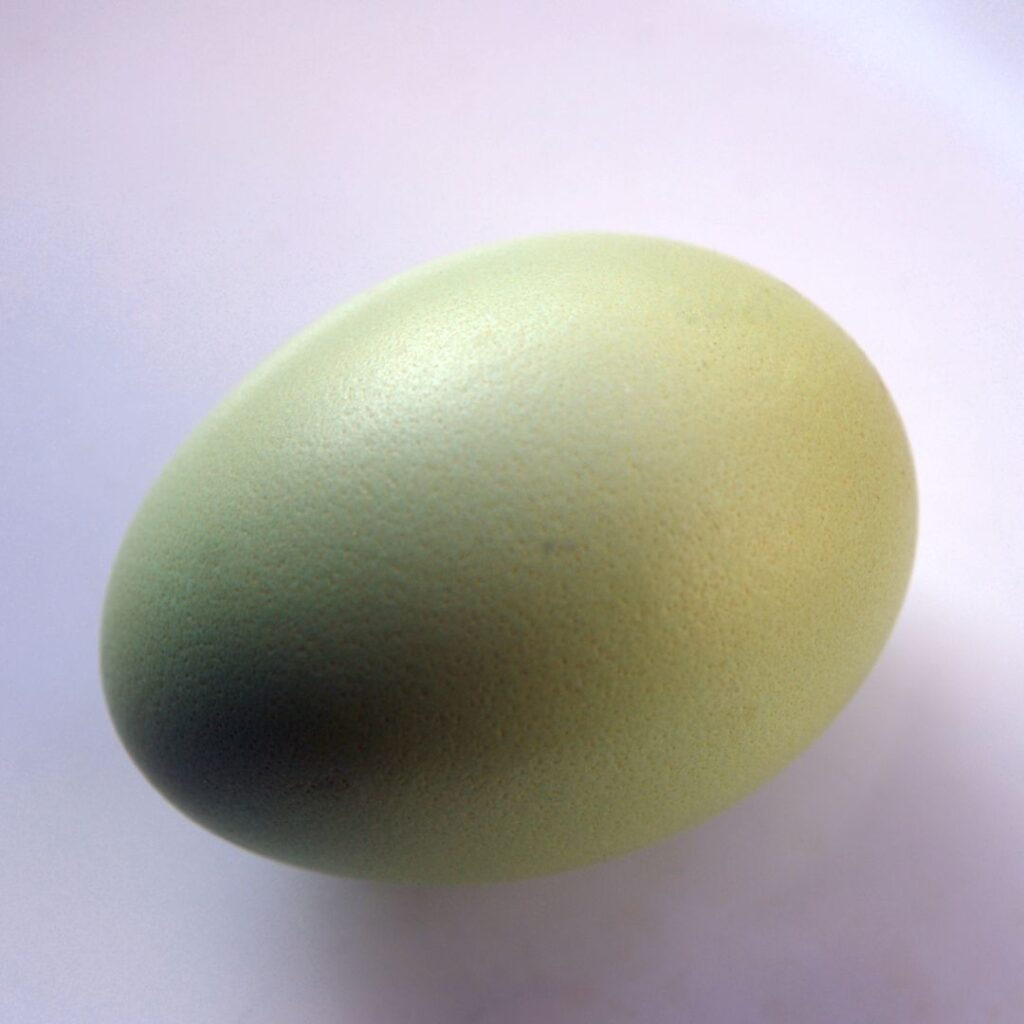
History of the Olive Egger Chicken
The Cross-breeding of poultry dates back to 1842, at the end of the opium war when Chinese goods were shipped to England. After farmers saw how successful this was in other animals, they began cross-breeding with other chickens to get specific desired traits.
Olive Eggers are made by pairing a blue egg layer with a brown egg layer.
The blue egg-laying parents may be:
The brown egg layers may be:
- Barnevelder
- Empordanesa
- Marans (Black Copper Marans) – dark brown egg layer
- Penedesenca
- Welsumner – dark brown eggs
The era of “hen fever” dawned when farmers started to test various hybrids. Among the different breed combinations, some were much more successful than others and eventually rose in popularity. Oliver Eggers is an example of a hybrid chicken that grew stronger and adapted better than many other mixed-breed chickens.

What does an Oliver Egger Chicken Look Like?
Olive Egger chickens are hybrid chicken breeds. They do not have a ‘standard’ for appearance; you will not find this as a breed listed in the American Poultry Association registry (APA).
Olive Eggers have unique looks, and no two Olive Egger chickens are precisely alike. As with people, the parents may have offspring with similar features, but each chick/ child has a unique appearance.
With parents of brown egg layers and blue egg layers, one of the few similarities these hybrid chickens have is their varying shades of olive green eggs.
With different parent breeds, their appearance can vary; some may have pea combs, feathered legs, and (puffy cheeks) muffs, while others may not. Plumage colors also differ across Olive Eggers, making them unpredictable in the best way.
The size, color, and weight of Olive Eggers are dictated by the breeds used to create them, giving them a diverse variety of colorful coats, comb styles, and more. They are most often medium-sized chickens.
These fun little chickens might don pea combs, muffs, beards, and/or feathered legs – it’s anyone’s guess with this hybrid chicken.
What do Baby Olive Egger Chicks Look Like?
An Olive Egger chick will have black, charcoal gray, or light gray and brow color to their down (chick plumage). However, as baby chicks mature, they can grow into almost any color combination, with or without muffs, beards, and even feathered legs.
When do olive eggers start laying
At 20 weeks, these young ladies begin to lay their first olive-colored eggs. Early on, pullet eggs are often small (even ‘fairy egg’ size), which is typical for a younger hen (pullet). However, these girls’ varying shades of Olive green eggs are gorgeous.
Because of the parent lines and the unpredictable nature of cross-breeding chickens, a small amount of the matured hens will lay blue eggs or brown pigment eggs.
Some parent lines will produce a darker green egg with speckles.

What Size Eggs Do Olive Eggers Lay?
Medium to Large. This may be different depending on the parent breeds. Check with your breeder or hatchery lines to know more accurately what to expect from the Olive Egger chicken you have.
How many eggs do Olive Egger Hens Lay?
Your Olive Egger hen will lay 3 to 4 olive-colored eggs weekly, approximately 150 to 200 olive eggs a year.
How Long Do They Lay Green Eggs?
Your Olive Egger chicken will produce eggs regularly for 2-3 years when they reach their ‘peak.’ Egg production will slow down each year after that, stopping around 5-7 years of age.
Dual Purpose Breed
The Olive egger chicken was never intended for meat when it was bred. Like any poultry, of course, they can be used for meat, but you won’t get much from this chicken.
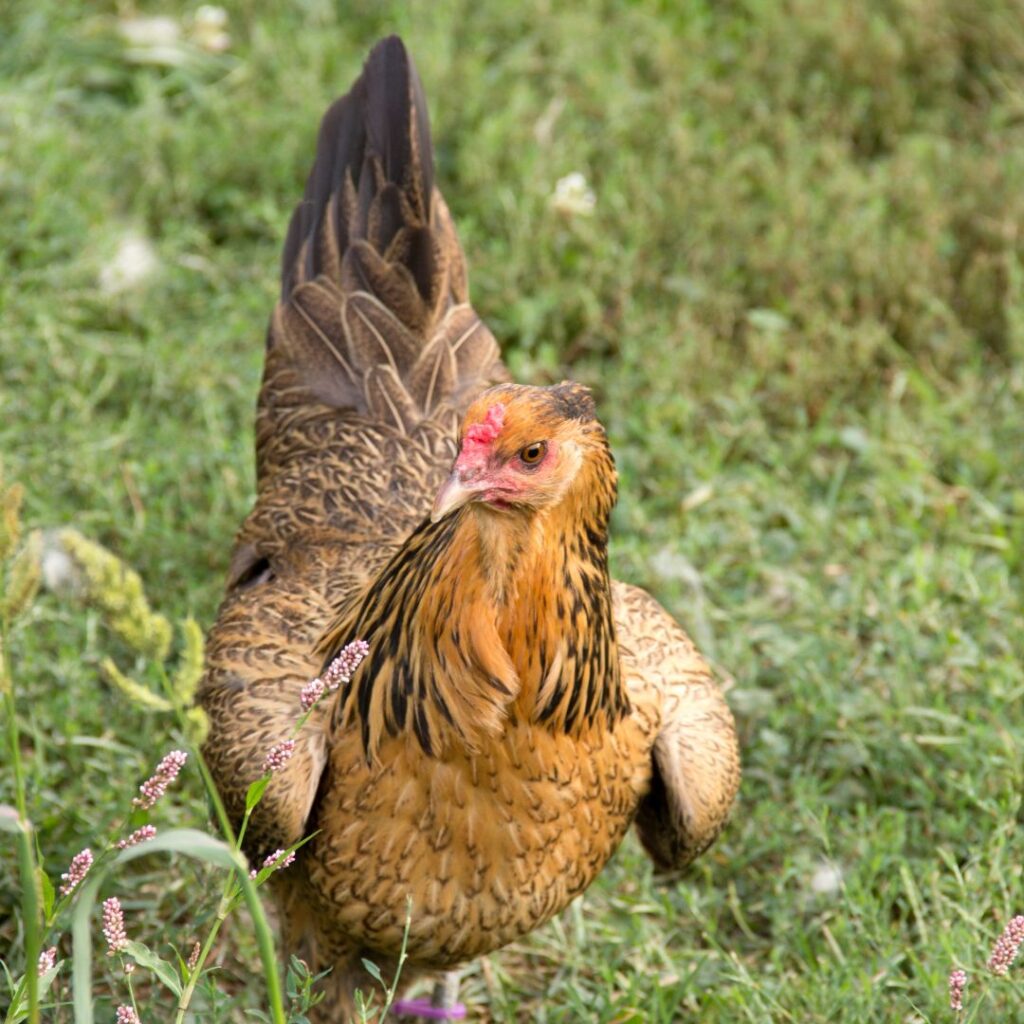
Olive Egger Chicken Temperament and Disposition
With their positive temperament and friendly nature, Olive Egger chickens make an excellent choice for beginner chicken owners. They are usually docile and relatively low-maintenance, making them easy to manage and care for. Welsummer genes can result in an exceptionally clever olive egger chicken, so these birds may even be eager to learn or respond to human interaction. In any case, Olive Eggers are generally easy to get along with and quiet, as well as hardy chickens.
Are Olive Egger Roosters Aggressive?
Olive Egger roosters are known to be quite docile. Like any rooster, they will protect their hens and assert themselves to ward off trouble or predators.
Great care should be taken to never over-populate your flock with roosters. One rooster should be the most your flock has for every ten hens.
Is The Olive Egger Chicken Noisy?
Generally speaking, Olive Eggers are more on the chatty side than they are loud. They may often be heard clucking away contentedly in the coop, but not so much that it becomes intrusive. Temperament and personality can vary significantly between birds of these hybrid chickens, so that you may find yourself with one vocal and another uncharacteristically quiet.
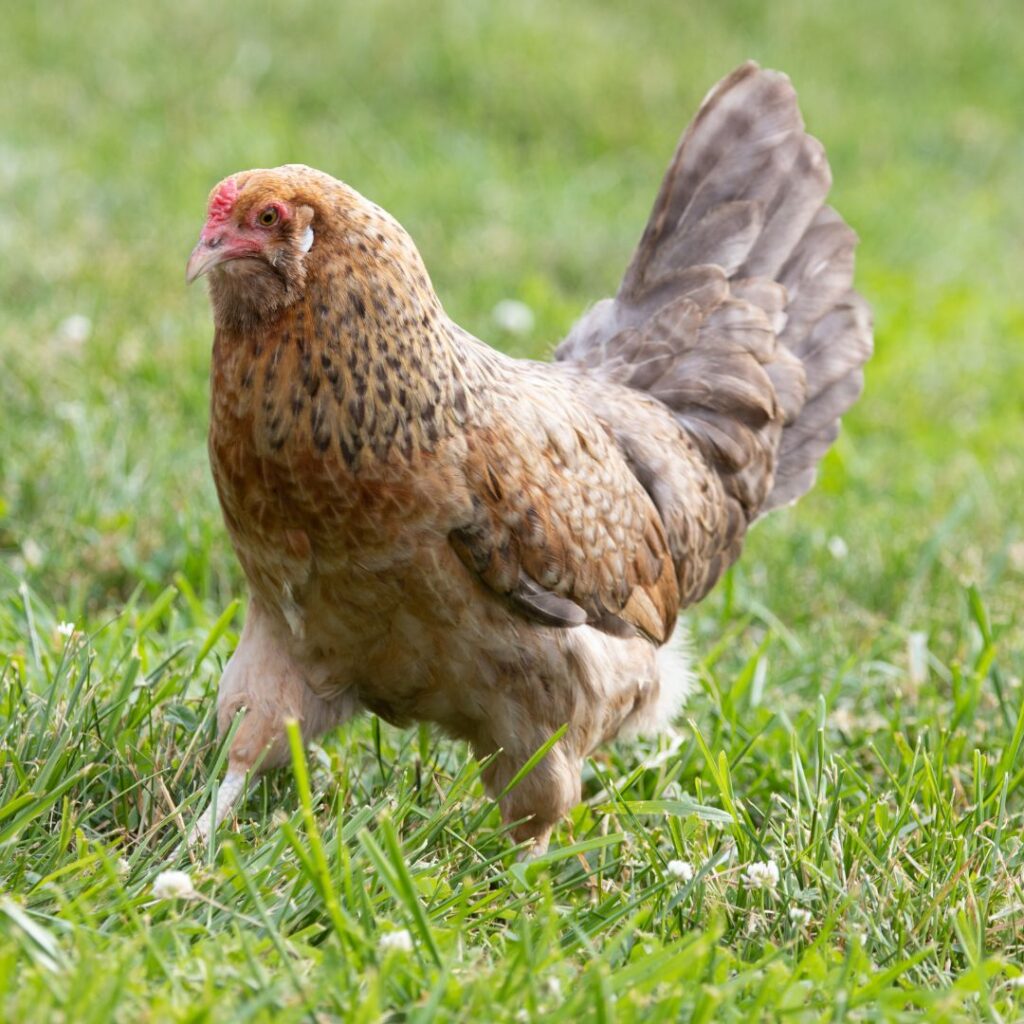
Breed Variations of the Olive Eggers
There aren’t ‘varieties’ of Olive Eggers; the parent lines dictate the appearance and characteristics of this hybrid chicken.
However, hatcheries offer another olive egg-laying hybrid, the Saphire Gem or The Saphire Olive Egger.
The only difference between a typical Olive Egger and a Sapphire Olive Egger is their coloring. The bluish hue of Sapphire olive eggers comes from their genes. This makes their appearance different than Olive Eggers, even though both types lay eggs with varying shades of olive.

Olive Egger Bantams
This is a mini-version of the Olive Egger Standard chicken. The Olive Egger is easy to care for like its counterpart. These miniaturized bantams are also bred using brown egg layers and blue egg-laying parents.
The hen weighs 31 oz (just under 2 pounds), and the rooster weighs 35 oz (just over 2 pounds). They lay small bantam-sized eggs.
The eggs they lay come in beautiful shades of blue and olive green, with the occasional bantam hen laying brownish or pink colors.
An Olive Egger Bantam is perfect if you love Olive Eggers and have limited space in your backyard.
They are excellent brooders, which can help you grow your bantam flock at a low cost. Not to mention the benefits of teaching children about the ‘facts of life the easy way.
American Poultry Association Recognized Breeds That Lay Green Eggs
The American Poultry Association only recognizes one ‘pure’ breed of chicken that lays green eggs. These are the Isbar Chickens.
Isbar Chickens
Isbar chickens are a rare breed that produces unique and intriguing green eggs. Originally bred in Sweden in the 1980s, these birds are prized for their green eggs and high egg production.
Isbar chickens are cold-hardy and love to forage. These beautiful hens weigh up to 3.5 pounds, while roosters can get as heavy as 5.5 pounds.
A single Isbar chicken hen can lay up to 250 large eggs each year of a light green color ranging from mossy to mint.
What’s The Difference Between An Easter Egger & An Olive Egger Chicken?
These are both hybrid chickens, Olive Egger and Easter Egger; the ‘egger’ in their names might look the same, but they have been bred for different qualities.
Olive eggers lay shades of olive eggs from dark to pastels. Easter eggers can lay a spectrum of colors from blue, green, pink, and brown.
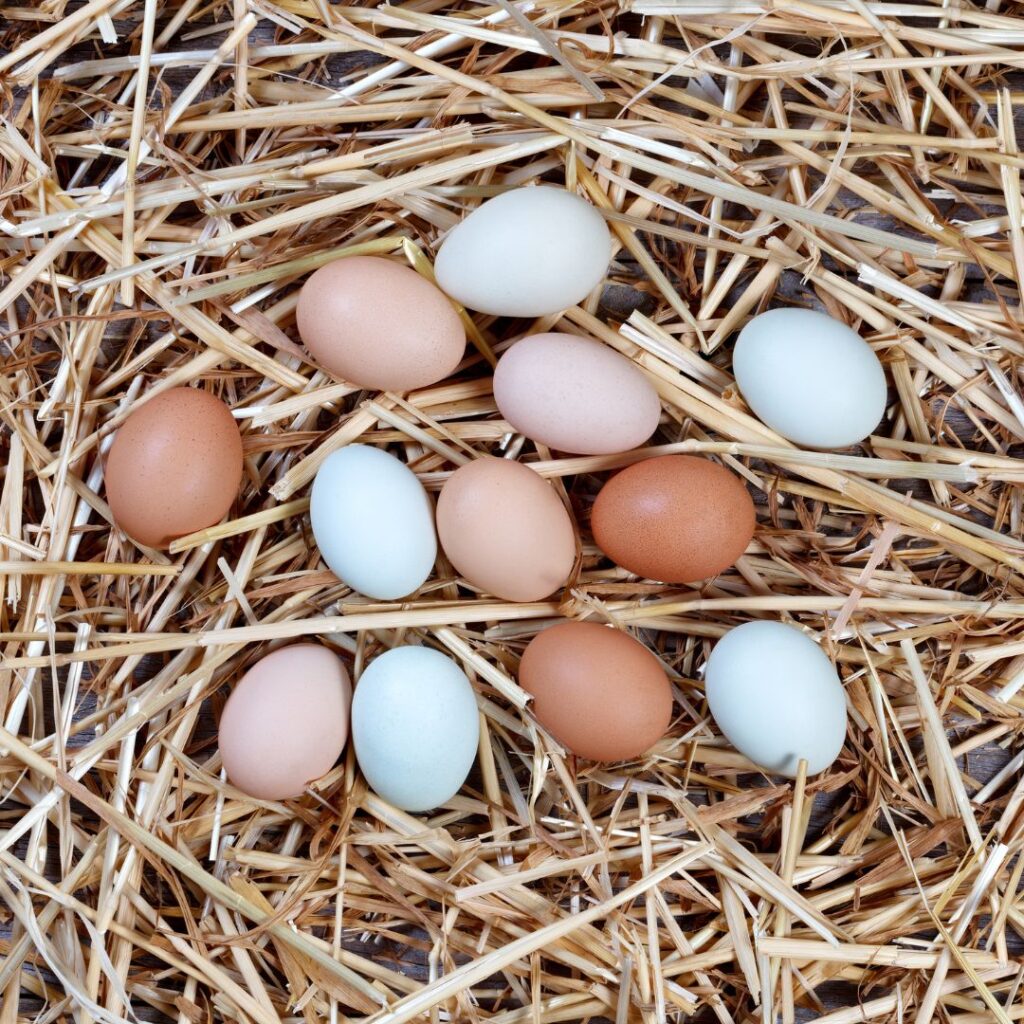
The Chicken Coop Size for Olive Egger Chickens
Your Olive Egger chickens need a safe, secure place to make their home. Providing them with the essentials will ensure a healthy and happy chicken.
Space
The Olive Egger chickens should have at least six square feet for each chicken for their indoor chicken coop, aka the hen house.
Roosts
Place the roost no more than 4 feet above the ground. One foot of roost space for your Olive Egger chickens will give them a space to sleep. During the winter, you can see them roosting close together as a natural way to stay warm.
Nesting boxes
The usual twelve-inch square nesting box is perfect for your hens to lay their lovely Olive Egger chicken eggs. Place a generous amount of bedding in each nesting box to comfort your hen and cut down on any eggs breaking.
Olive Egger hens do tend to go broody. The nesting box will be a safe place for them to set upon and hatch those Olive Egger chicks.
Feeders and Waterers
Feeders and waterers should be kept up off the ground/ floor. This will help keep litter, bugs, and chicken poop from contaminating them. Place them only so high that your chicken can comfortably feed and hydrate.
Ensure food and water are always fresh, and regularly clean out the containers.
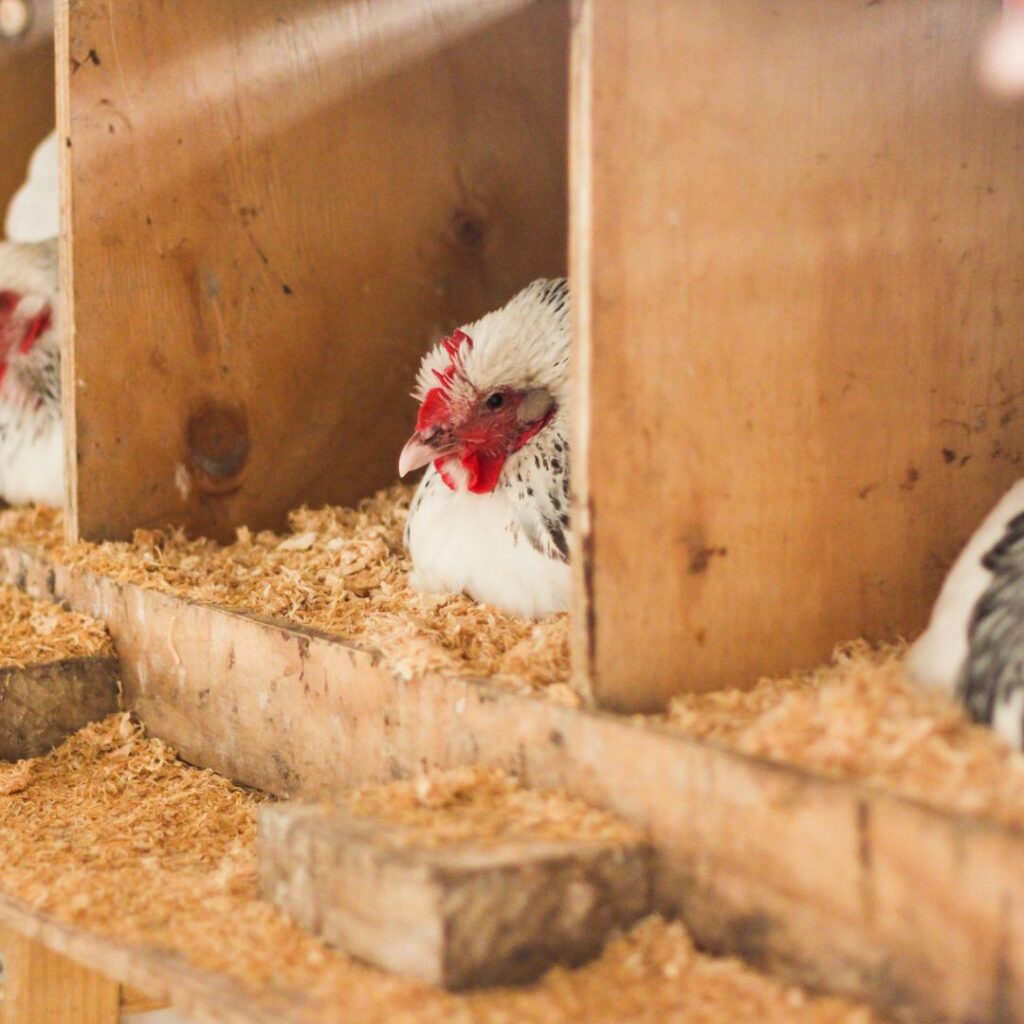
The Chicken Run
Space
Ten square feet of outdoor run space per chicken is perfect for this active chicken. Olive Egger chickens love to foraege. Providing them with as much room as you can spare will go a long way to a happy, healthy Olive egger chicken. Many chicken keepers also benefit from adding overhead ‘fencing’ with hardware cloth.
In addition to ‘run’ space, consider adding some vertical space with perches.
Fencing height
Six feet high fencing is as low as you should go with chickens in an outdoor run. You want to keep your
Shelter from elements
The shelter is important to help with a comfortable outdoor run area. Tarps, a lean-to-, even placement under a shady tree, can add shade from the summer heat, shelter from the rain, and cover from cold, wet snow.
Dust Bath
Do your Oliver Egger a favor and take the time to add a dust bath. A small kiddie pool or even an old tire or dig a hole. Place some contractor sand mixed with herbs (bug deterrent), diatomaceous earth, and wood ash. This ‘dry’ dust bath will help your bird free themselves of pesky mites and lice and keep their feathers shiny and healthy.
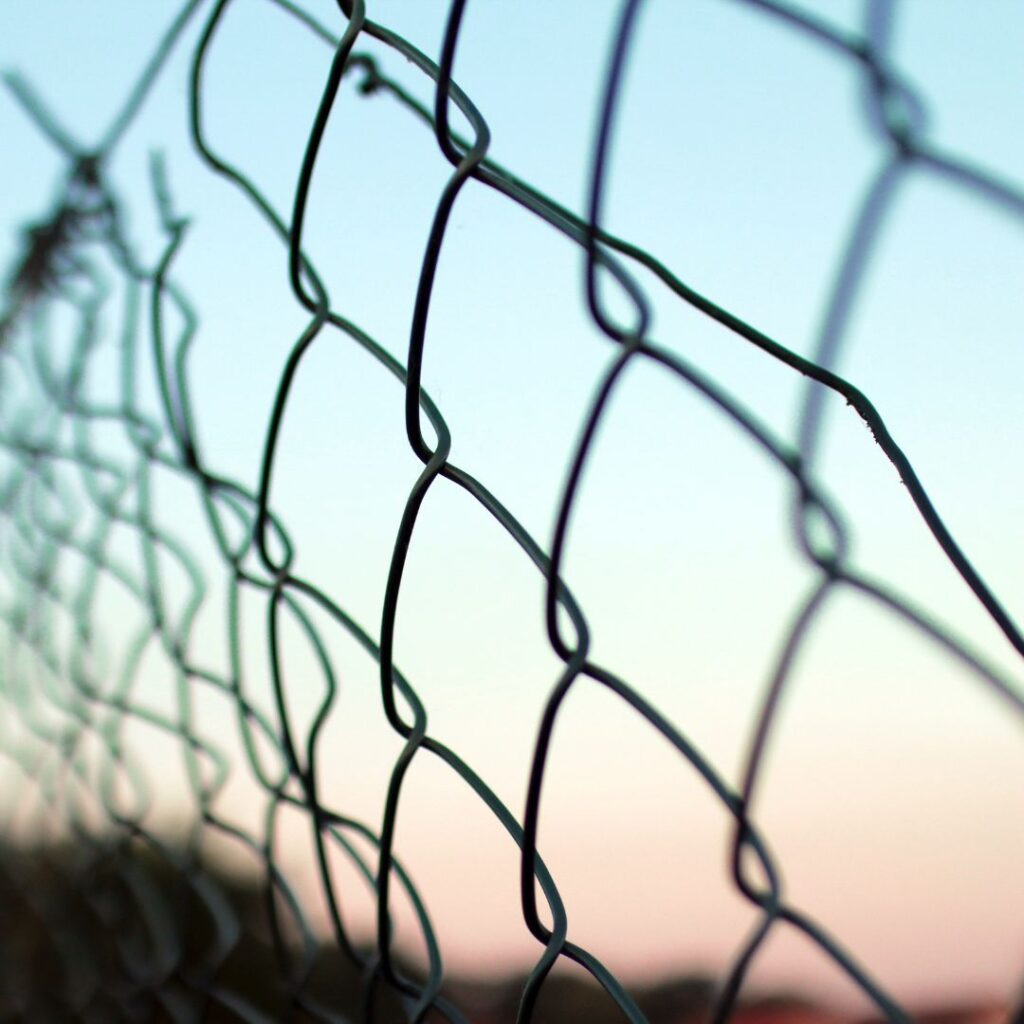
Free-Range and Foraging
The Olive Egger chicken is an excellent choice for someone just starting to raise a free-range flock. They are very active and will peck at anything they come across.
Are Olive Eggers Cold, Hardy, and Heat Tolerant
Olive Eggers can adapt to multiple types of climates. They come from hearty stock that can withstand cold weather. Most can also endure hot temperatures with the proper coop and run conditions.
Coop Prep – Ensure your coop is adequately ventilated from the start and you’ll have fewer problems with chicken health and overall well-being. Poor ventilation can lead to overly humid conditions indoors during the summer; this leads to respiratory problems in your flock.
If your structure allows, a screen window and/or door will help with cross ventilation (breezes) in warmer months.
Ventilation will keep winter damp weather in check, so your chickens can stay warm and avoid frostbite and frigid cold.
Winters can be more work. You can add bales of straw around the outside of your coop for wind protection and added insulation. Alternatively, you can wrap your coop and cover the roof with plastic sheeting or tarps.
Waterers – No way around it; your chickens need fresh and clean water. In the summer heat, you can add in iced cubes to help keep the temperature of the water cooler, and as the ice melts, it will provide a fresh-water source.
Winters can be incredibly challenging when temperatures dip below freezing. You have a few options here. Using a heated bowl or heated waterer, you can change water throughout the day. These last two options require a safe source of electricity.
Frostbite – Olive egger chickens can have any style of combs. Pea combs are pretty resistant to frostbite; other combs can make your chicken vulnerable. Simply putting a small amount of petroleum jelly on their wattles will go a long way toward preventing this painful and potentially fatal condition.
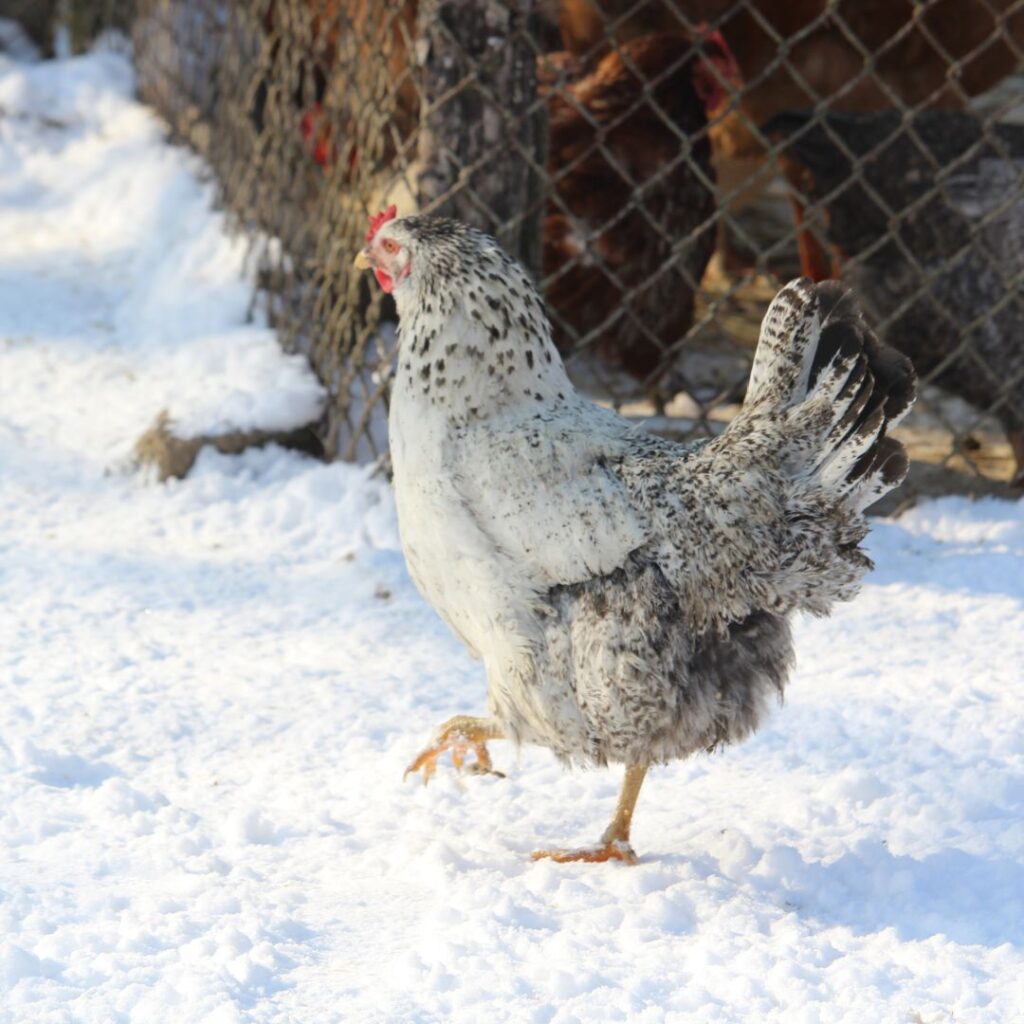
Are The Olive Eggers Good Urban (City) Chickens?
This can be a tricky answer. You’ll need to check your hatchery or breeder’s parent breeds to see just how ‘loud’ the parent breeds are.
Being talkative birds, the Olive egger chickens can be bothersome to neighbors, especially if their volume is on the high side.
While they handle confinement well, the noise is probably too much of a risk to take for having an urban flock.
Life Expectancy of the Olive Egger Chicken
The life span of an Olive Egger chicken is quite like that of most chickens. Your Olive Egger will live for approximately 7-8 years. Enjoy your time with these chickens; they’re beautiful and will gift you many times over with farm-fresh eggs.

Is The Olive Egger Right For Backyard Chicken Keepers?
The Olive Egger chicken is popular among backyard chicken keepers because they are friendly and docile, with the bonus of cold hardiness and a heat tolerance.
Not only can you enjoy their beautiful array of colored feathers but also their colorful eggs, which range in shades of olive green.
The Olive Egger has, even more to offer if it’s given the space to forage, allowing them to help you reduce the grub and tick population in your yard.
These chickens can lay over 200 uniquely-colored eggs each year!
Olive Eggers are a trendy breed of chicken due to their unique appearance, egg-laying abilities, and hardiness. The Oliver Egger chickens make great roommates for mixed flocks too.
Whether you’re looking for new members for your existing flock or a friendly fresh egg layer, Olive Egger chickens may be the perfect option.

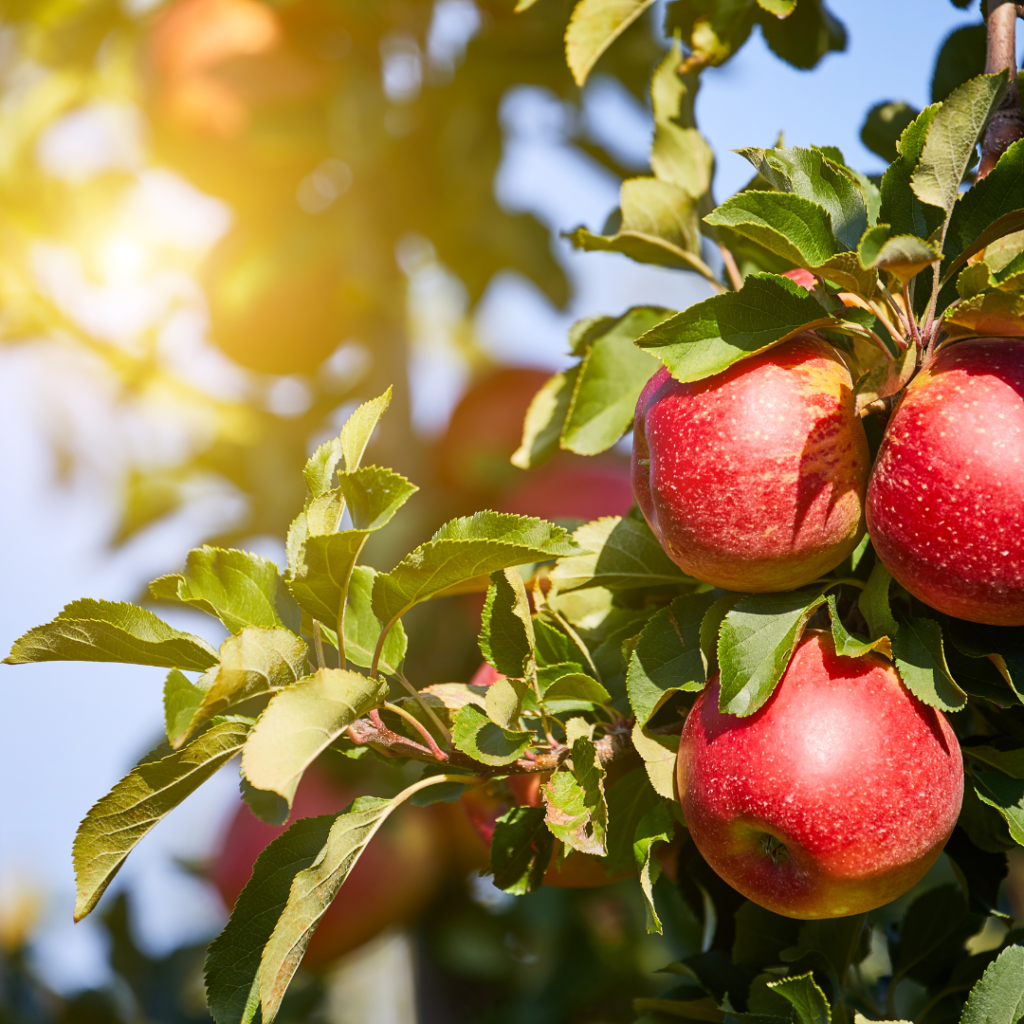
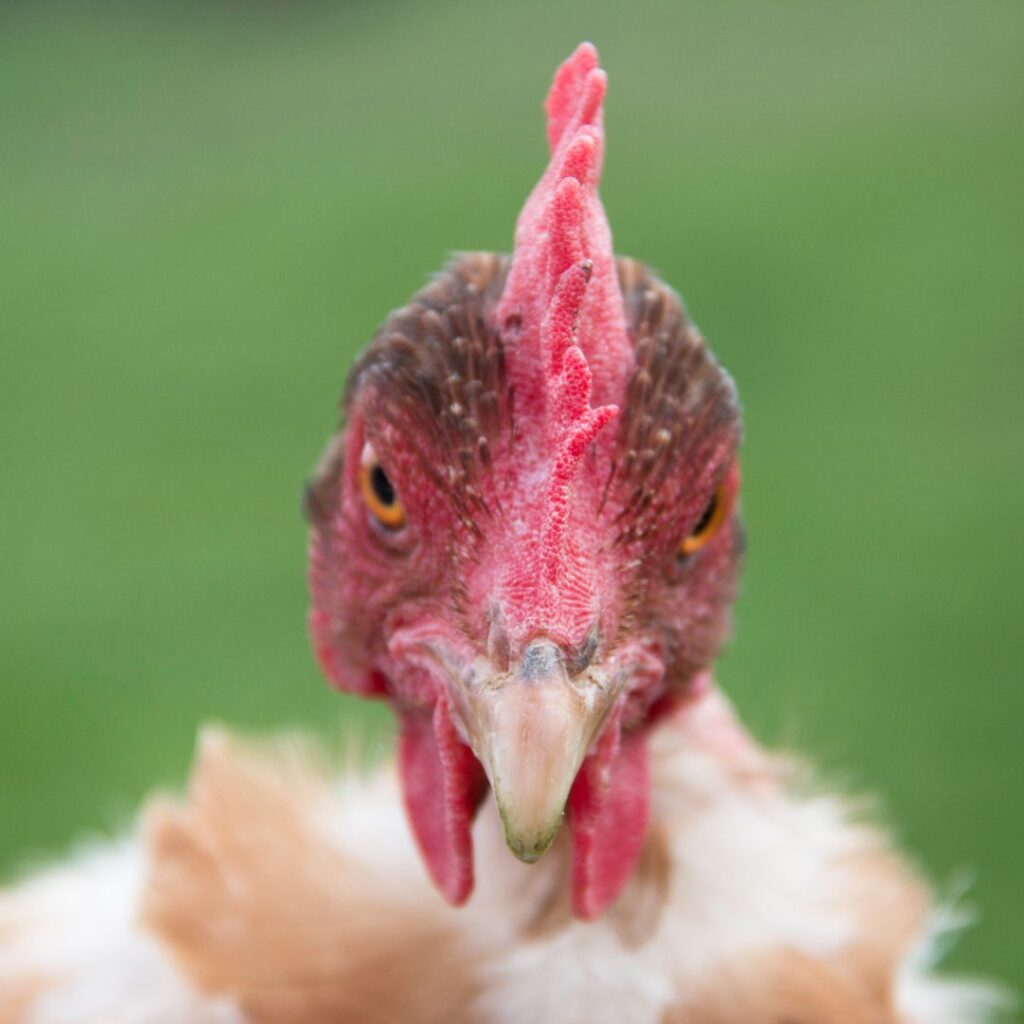
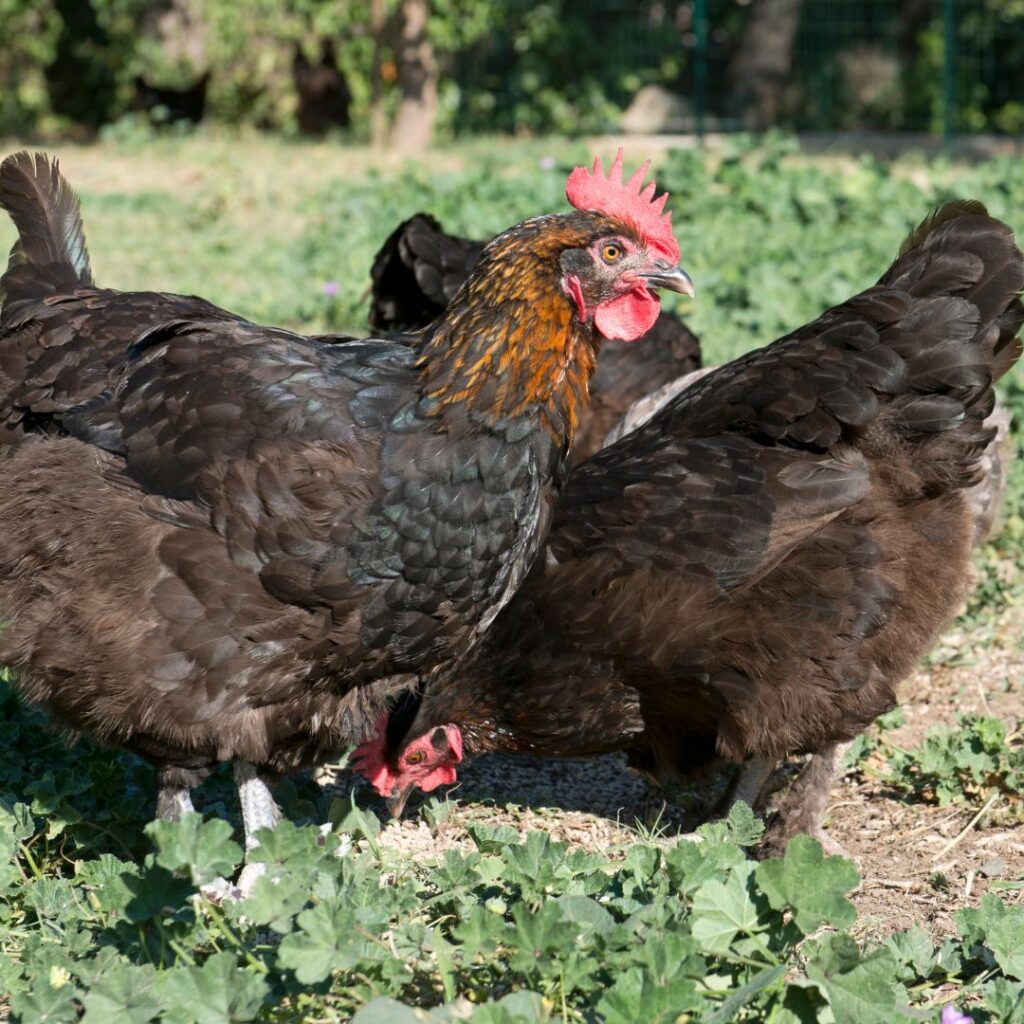
Pingback: 15+ Best Egg Laying Chicken Breeds; Qty, Color, Size Of Eggs
Pingback: 23+ Interesting And Fun Facts About Chickens - Gilmore's
Pingback: Delaware Chicken Breed; Everything You Need To Know
Pingback: Araucana Chickens: Unique Chicken Lays Blue Eggs - Gilmore's
Pingback: Do Chickens Lay Eggs In Winter Months? How To Encourage Egg Laying Year Round